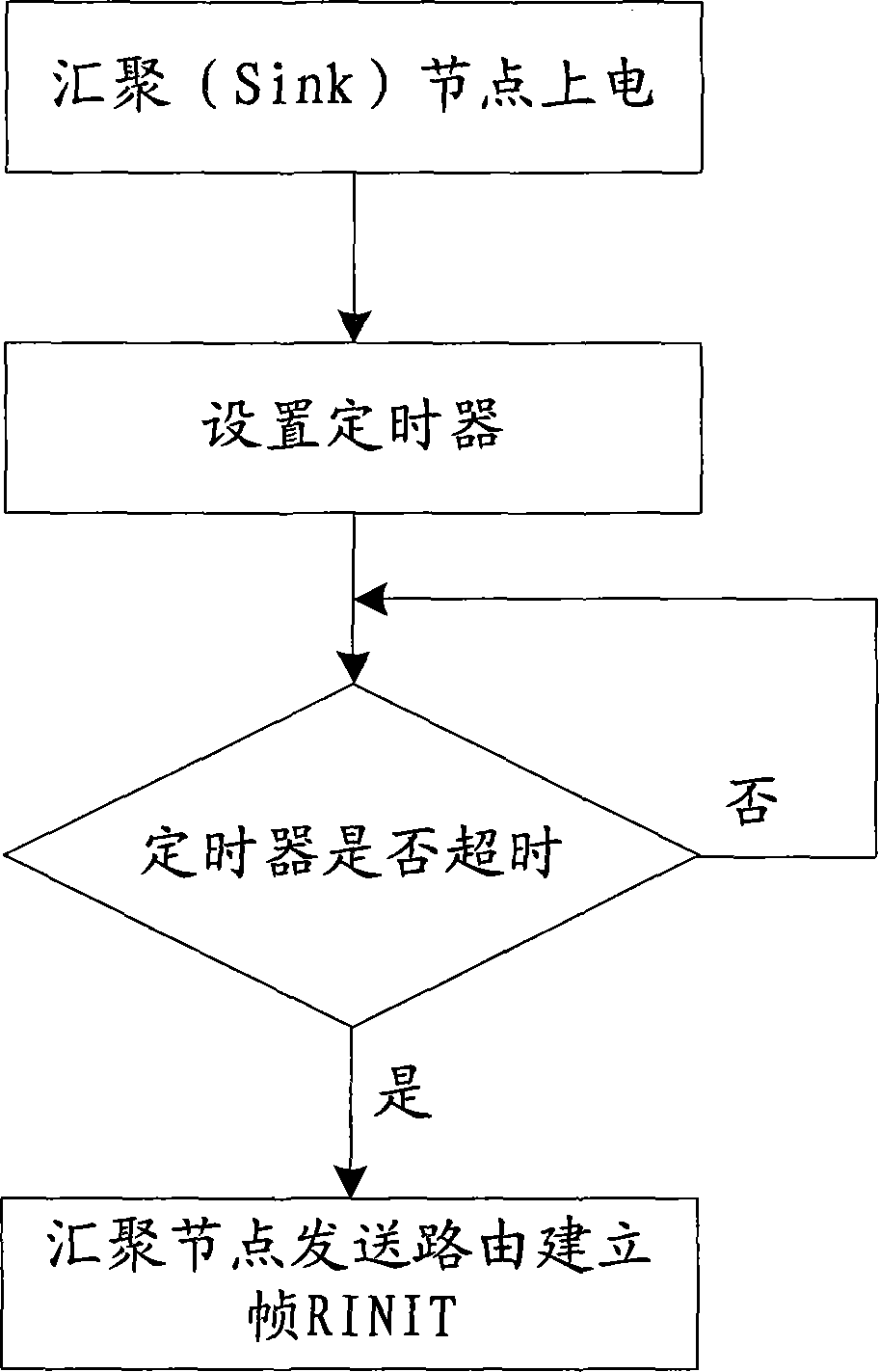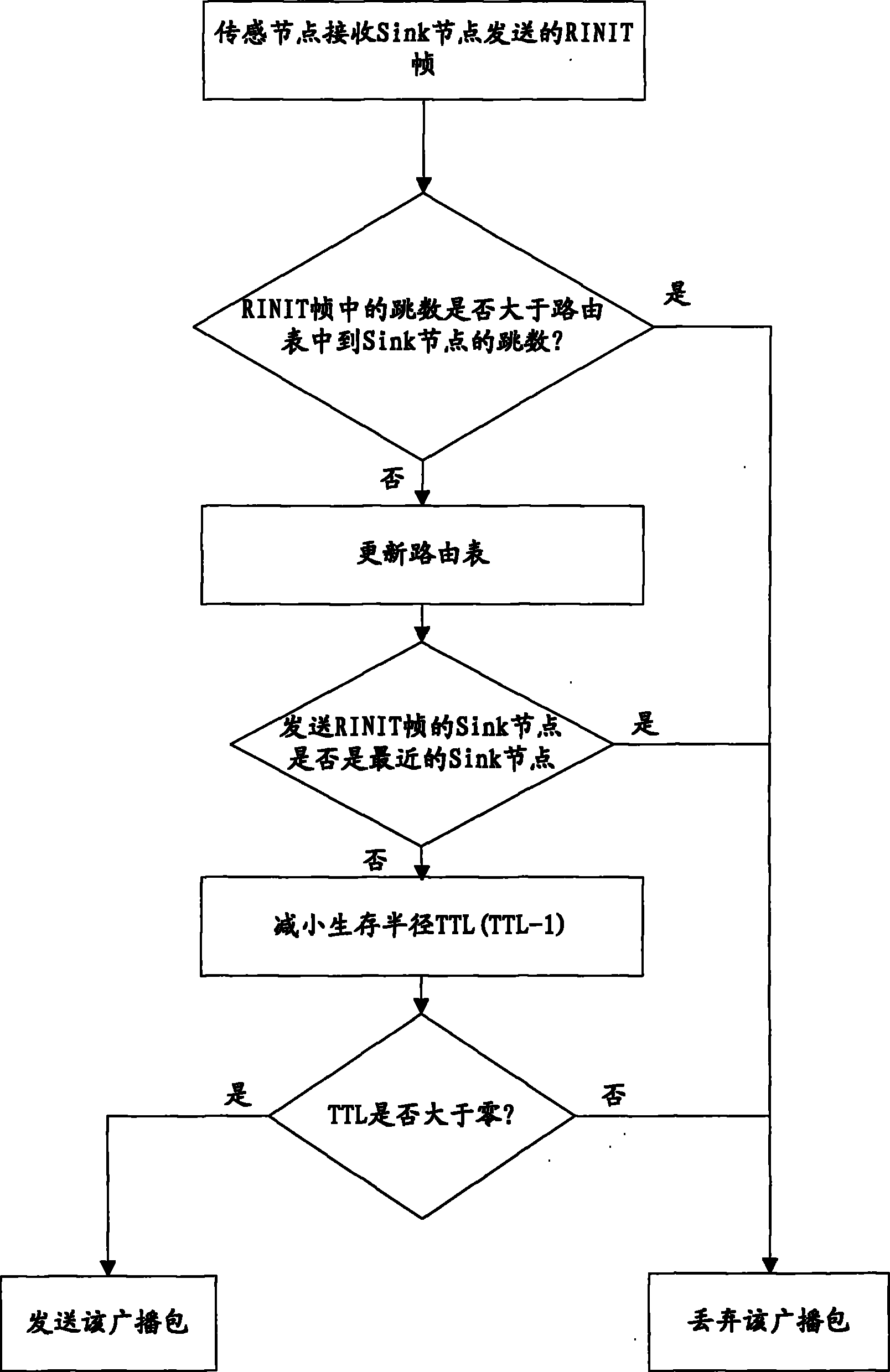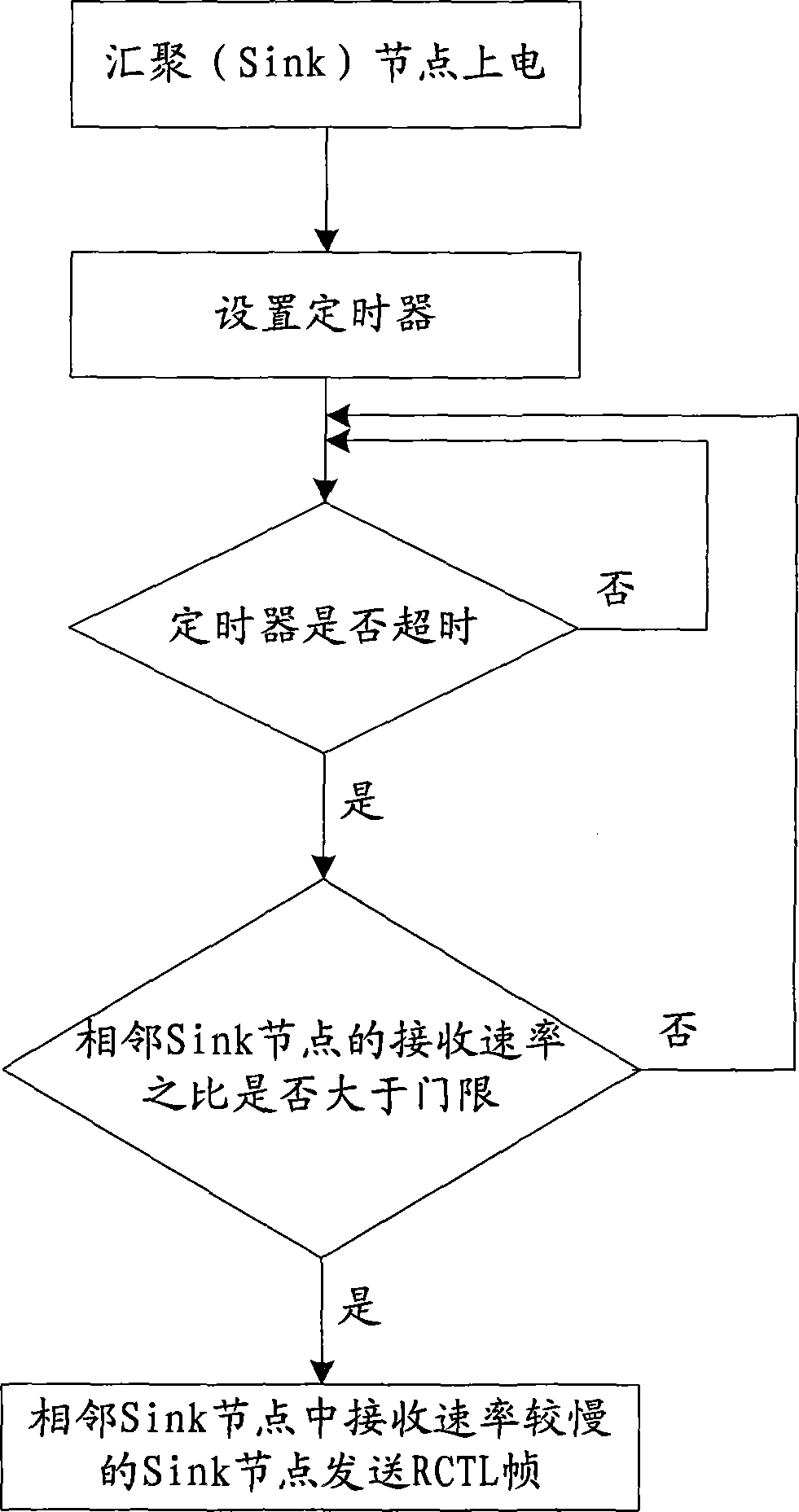Routing method for load balancing between multiple sink nodes of wireless sensor network
A multi-convergence node and wireless sensor network technology, which is applied in the field of load balancing routing among multi-convergence nodes in wireless sensor networks, can solve the problems of Sink heavy load, energy exhaustion, and uneven division of load areas, and extend the network Effects of longevity, reduced control overhead, and small computational overhead
- Summary
- Abstract
- Description
- Claims
- Application Information
AI Technical Summary
Problems solved by technology
Method used
Image
Examples
Embodiment 1
[0029] This embodiment provides a load balancing routing method among multi-convergence nodes of a wireless sensor network. The method is implemented based on the nearest sink strategy, and mainly includes the following two parts:
[0030] 1. The load balancing routing method within the jurisdiction of the aggregation node (Sink node):
[0031] 1), during initialization, each sink node (Sink node) sends a route establishment frame RINIT, and the sensor node that receives RINIT obtains the minimum hops from itself to each Sink node through the broadcast of this frame;
[0032] 2), the sensor node selects the sink node with the smallest number of hops as the destination Sink node for data transmission;
[0033] 3) The sensor node selects the parent node with the slowest energy consumption speed as the next hop node according to the energy consumption of several parent nodes.
[0034] 2. Load balancing routing method between sink nodes:
[0035] 1), a Sink node detects the rece...
PUM
 Login to View More
Login to View More Abstract
Description
Claims
Application Information
 Login to View More
Login to View More - R&D
- Intellectual Property
- Life Sciences
- Materials
- Tech Scout
- Unparalleled Data Quality
- Higher Quality Content
- 60% Fewer Hallucinations
Browse by: Latest US Patents, China's latest patents, Technical Efficacy Thesaurus, Application Domain, Technology Topic, Popular Technical Reports.
© 2025 PatSnap. All rights reserved.Legal|Privacy policy|Modern Slavery Act Transparency Statement|Sitemap|About US| Contact US: help@patsnap.com



